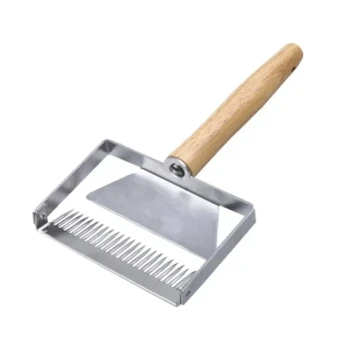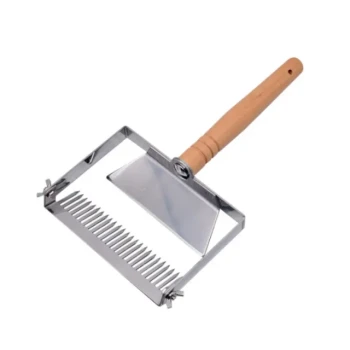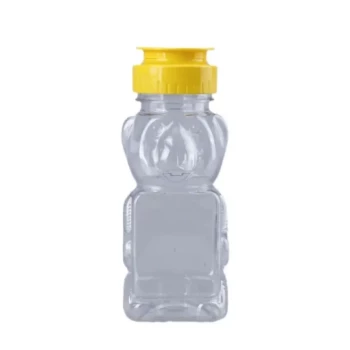In beekeeping, honey uncapping is the essential process of removing the thin beeswax seal, known as "cappings," from the top of honeycomb cells. Bees create these airtight caps to preserve the fully cured honey. Beekeepers must remove them before the honey can be drained or spun out of the comb during harvest.
The core purpose of uncapping is to open the sealed honey cells for extraction. Your choice of tool—from a simple cold knife to an automated machine—is a strategic decision that balances efficiency, cost, and the scale of your beekeeping operation.
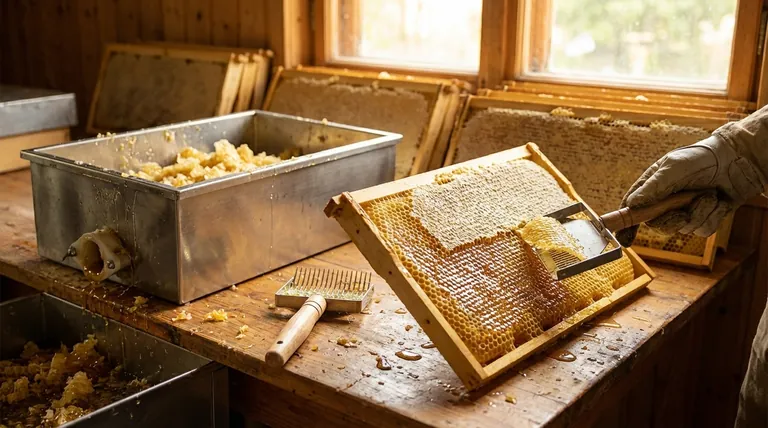
Why Uncapping is a Critical Step in Honey Harvest
Uncapping is not just a preliminary task; it's a foundational step that enables modern honey extraction and supports the long-term health of the colony.
To Release the Cured Honey
Honey is "hygroscopic," meaning it will absorb moisture from the air. Bees cap the honey only when its water content is low enough (typically below 18.6%) to prevent fermentation and spoilage.
These wax caps create a perfect, long-term storage seal. To harvest the honey, this seal must be cleanly broken.
To Enable Centrifugal Extraction
Most beekeepers use a machine called a honey extractor, which spins the frames at high speed. This centrifugal force flings the honey out of the cells and against the wall of the extractor drum.
This process is only possible if the cells are open. Without uncapping, the honey would remain securely locked in the comb.
To Preserve the Comb for the Bees
Bees expend an enormous amount of energy to produce wax and construct honeycomb. By carefully slicing off only the top layer of cappings, the underlying comb structure remains intact.
After extraction, these empty "wet" combs can be returned to the hive. The bees will clean them and can begin refilling them with nectar immediately, saving them significant time and resources.
The Beekeeper's Uncapping Toolkit
The tools for uncapping range from simple hand tools to sophisticated machinery, each suited for a different scale of operation.
The Manual Approach: Cold Knives and Forks
A cold uncapping knife is a long, serrated blade that physically saws through the wax cappings. This is the simplest and most affordable method.
An uncapping fork (or scratcher) has sharp tines used to pierce cappings in low spots or areas the knife missed. It is an essential companion tool for any uncapping method.
The Efficient Upgrade: Electric Hot Knives
An electric hot knife features a built-in heating element, often with a thermostat. The heated blade melts cleanly through the wax cappings with minimal physical effort.
This method is significantly faster and less physically demanding than using a cold knife, making it the preferred choice for beekeepers with more than a few hives.
The High-Volume Solution: Uncapping Machines
For large commercial operations, automated uncapping machines process frames at high speed. These machines use flails, vibrating blades, or rollers to remove cappings from hundreds of frames per hour.
Understanding the Trade-offs: Hot vs. Cold Knives
For most small-to-mid-scale beekeepers, the primary decision is between a hot knife and a cold knife. Each has distinct advantages.
Speed and Efficiency
A hot knife is undeniably faster. It glides through the wax, requiring little more than a steady hand. A cold knife requires a back-and-forth sawing motion and more physical force.
Cost and Simplicity
A cold knife is inexpensive, requires no electricity, and is easy to clean and maintain. An electric hot knife represents a higher initial investment and requires a power source near your workspace.
Handling the Wax Cappings
A cold knife produces clean slices of wax, which can be easier to process. A hot knife creates a slightly melted mass of wax and honey, which is perfectly usable but requires separation in an uncapping tank or strainer.
Choosing the Right Method for Your Apiary
Your uncapping strategy should directly reflect the size of your operation and your goals for the harvest.
- If you are a hobbyist with just a few hives: Start with a sharp, serrated cold knife and an uncapping fork. This low-cost setup is perfectly adequate for harvesting a small number of frames.
- If you are managing a growing apiary (5-20 hives): An electric hot knife is a worthwhile investment. The significant time and labor saved during each harvest will quickly justify the cost.
- If your priority is maximizing every drop of honey: Use an uncapping tank to catch the frames and cappings. The honey-rich cappings will slowly drain, adding a surprising amount to your final yield.
Mastering the simple act of uncapping transforms a difficult task into an efficient and rewarding part of the honey harvest.
Summary Table:
| Tool/Method | Best For | Key Advantage |
|---|---|---|
| Cold Knife & Fork | Hobbyists, Small Apiaries | Low cost, simple to use, no power needed |
| Electric Hot Knife | Growing Apiaries (5-20+ hives) | Fast, efficient, less physical effort |
| Automated Machine | Large Commercial Operations | High-speed processing for hundreds of frames |
Ready to streamline your honey harvest? The right uncapping equipment is key to efficiency and yield. HONESTBEE supplies professional-grade beekeeping supplies and equipment to commercial apiaries and distributors through wholesale-focused operations. Let us help you choose the perfect tools to scale your success. Contact our experts today for a consultation!
Visual Guide
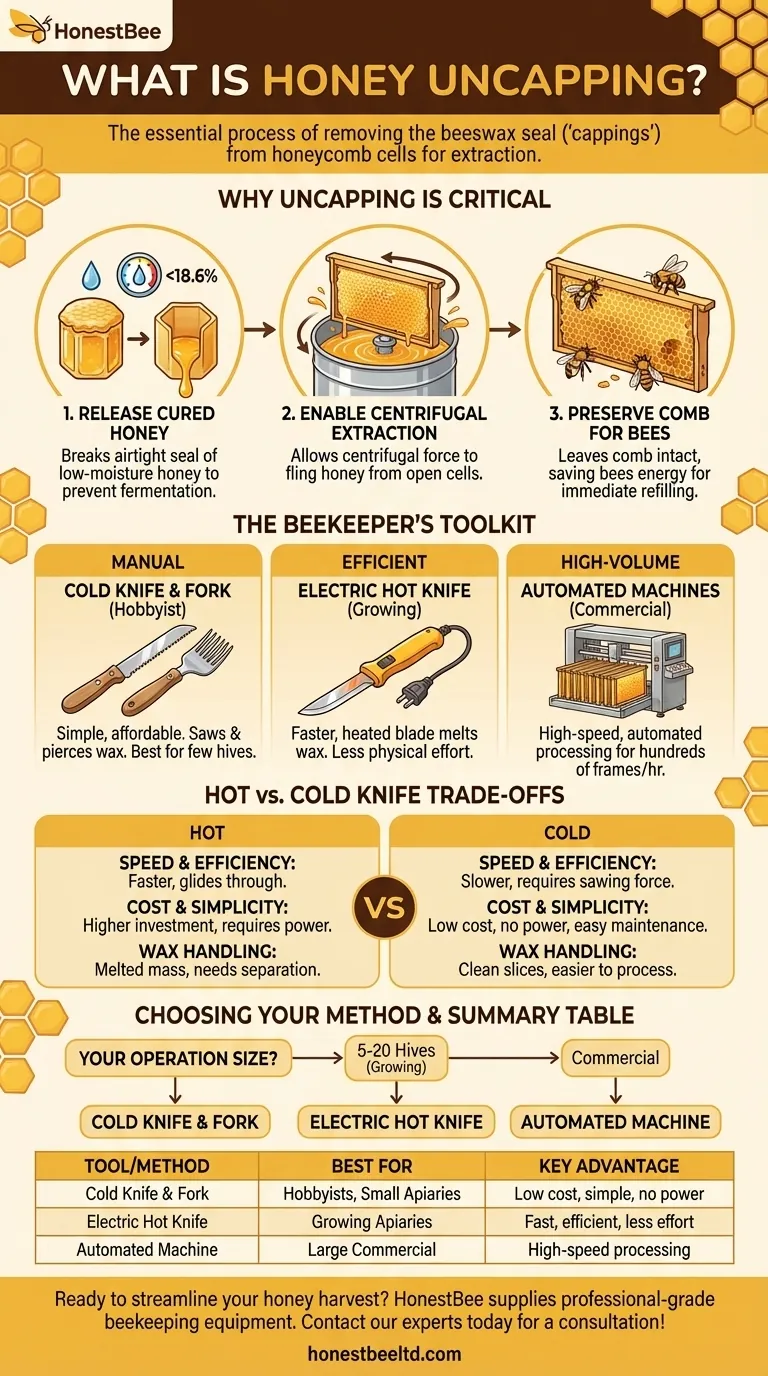
Related Products
- Extra Wide Stainless Steel Honey Uncapping Fork with Scraper Beekeeping Tool
- Wide Adjustable Stainless Steel Honey Uncapping Fork with Scraper
- Professional Long-Handled Silicone Honey Scraper for Beekeeping
- Professional Wide Blade Honey Scraper for Beekeeping and Honey Processing
- Honey Wax Separating Wax Press with Metal Screw Wax Separator Machine
People Also Ask
- What tools are available for uncapping honey? A Guide to Choosing the Right Tool for Your Operation
- Why is uncapping necessary in honey harvesting? Unlock Your Honey Yield & Preserve Comb
- What are the characteristics of the combined uncapping fork and scraper tool? Maximize Hive Maintenance Efficiency
- Why is the use of professional uncapping knives or uncapping forks necessary? Unlock Your Honey Harvest Efficiency
- What equipment is needed for honey extraction? The Essential Gear for Every Beekeeper
